
|
Olympus E-620 Image Samples — Part 2 |

|
My other articles related to the |
|
In Part 1 of my E-620 samples I'm showing mostly images shot under conditions I chose (if not controlled ones). Now it is time to show how the camera fares in real life. I will be sharing with you pictures shot during a brief trip to Zakopane, Poland, and the neighboring Tatra Mountains. Because the trip involved some significant hiking, I decided to travel light, taking along just the E-620 (no backup!) and the 12-60 mm F/2.8-4.0 ZD lens. (Actually, in good outdoors light the compact 14-42 mm ZD would be good enough for all my needs, but I wanted to have the extra 2 mm of wide angle.) Anyway, the 12-60 mm ZD is the lens used for all shots in this page. These are not necessarily images showing off best the camera's capabilities (or mine); just those which for one reason or another I chose as representative of my experience with the E-620. for better or worse. Comments follow samples. Image conversion parameters: all pictures are in-camera JPEGs (1:2.7), Natural Picture Mode, sharpness and contrast at -1, saturation at 0, normal gradation, noise filtering at Low. Other parameters are given in captions. "AP" stands for Aperture Priority, and exposure compensation follows in parentheses. (Check my remarks on full pixel scale image scrutiny in Part 1; they are relevant here.) Day 1: Arrival, a hike to Mt. Kopieniec Almost right off the train (a nine-hour overnight ride) we were ready for the first hike of the season: the nearby Mt. Kopieniec (1328 m); all samples in this section come from that hike. |
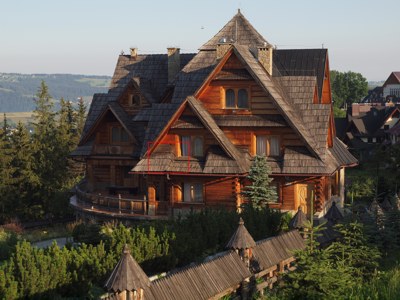
|
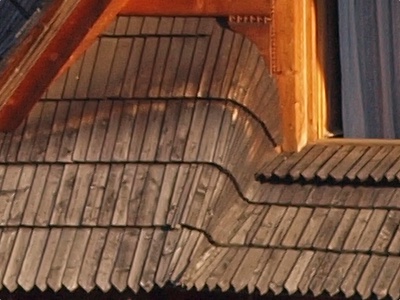
| |
|
[1] 33 mm; AP (±0 EV): 1/500 s at F/5.6, ISO 200; WB 6000K (cloudy) [full frame] | ||
|
This is an example of the local building style, somewhat corrupted with excess of money. It is a no-brainer, except that at this cloudiness I would be better off using the 5300K WB preset. (Auto WB, especially under changing conditions, is not something I would use here.) You can already see the atmospheric fog in the distant background. Have a look at the full frame; this actually is as good as it gets from the E-620. |
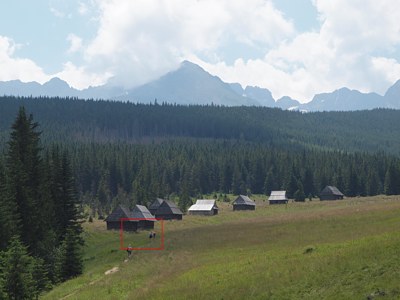
|
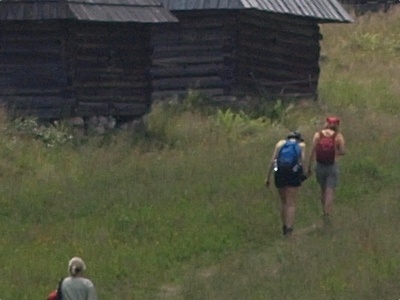
| |
|
[2] 45 mm; AP (-0.3 EV): 1/500 s at F/8.0, ISO 200, WB 5300K (sunny) [full frame] | ||
|
A typical, tough mountain scene, with the foreground much less bright than the sky and background mountains. I usually try to protect the white clouds from burning out, then brightening the foreground as and if needed with use of a mask; some contrast enhancement (or just lowering the gamma) may be useful in partial removal of the atmospheric haze (easy to overdo). |
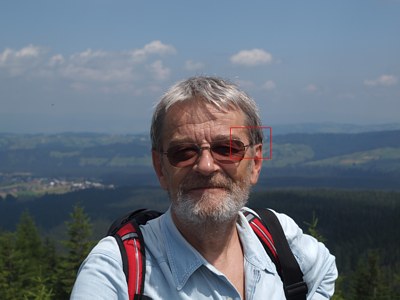
|
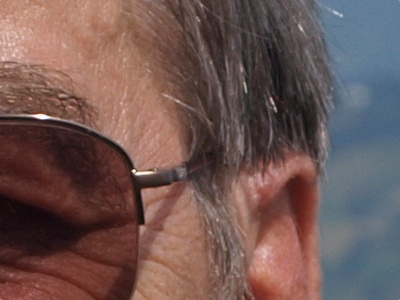
| |
|
[3] 35 mm; AP (±0 EV): 1/400 s at F/8.9, ISO 100; WB 5300 K | ||
|
When you hand a camera to a stranger to have your picture taken (my wife took the lower trail around the summit and I had to ask a Russian hiker passing by), they will, most of the time, place your head smack in the center of the frame, not realizing that the viewfinder is a means to preview the image, not just to have a close look at the subject. This is why in postprocessing (not shown) I had to crop the image from the top, in addition to moving the central part of the tonal curve a bit down. And I don't have a clue why I changed the ISO to 100. |
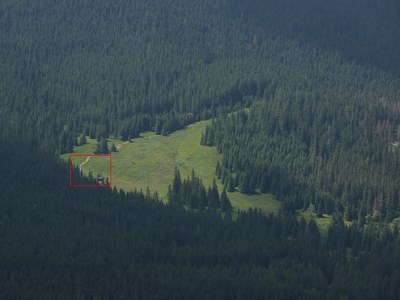
|
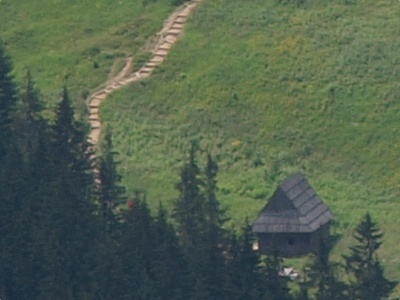
| |
|
[4] 60 mm; AP (-0.7 EV), 1.200 s at F/8.9, ISO 100, WB 5300K [full frame] | ||
|
A distant view from the summit: the atmospheric haze is quite visible here; this is why (not planning to do any wildlife) I did not bring my 70-300 mm ZD — I would end up just carrying it around. I hope the contrast enhancement in the postprocessed version is not excessive; in either case, the picture is nothing to write home about. I try to shoot it once every ten years, and always with a similar result. |
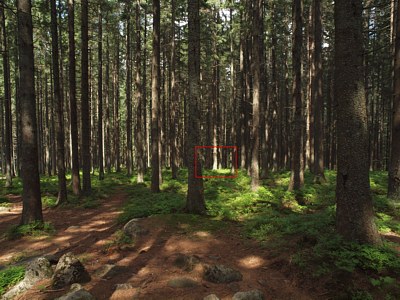
|
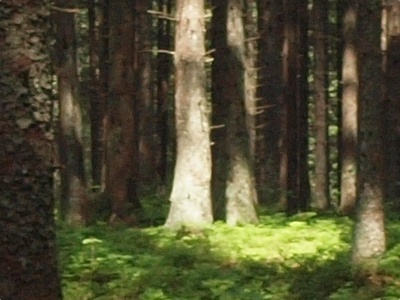
| |
|
[5] 12 mm; AP (-0.7 EV): 1/125 s at F/8.0, ISO 400; WB 5300 K [full frame] | ||
|
What is easier than a casual snapshot of a forest? Wrong! The wide tonal range is hard to squeeze into the sensor dynamics; that's why I'm using a bit more of negative exposure compensation: the shadows can (if needed) be restored, while the highlights, once lost, remain so. The fragment shows perhaps the worst piece of highlights; not too bad, see the full frame. Highlight recovery from a raw image file may work if the in-camera JPEG engine is inadequate, which is not the case with Olympus SLRs. Been there, done that (see). |
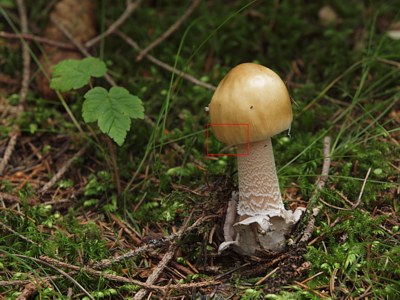
|
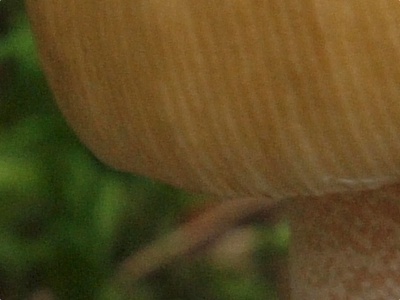
| |
|
[6] 60 mm; AP (-0.7 EV): 1/40 s at F/6.3, ISO 400; WB 5300 K [full frame] | ||
|
The microworlds right at your feet are one of my favorite subjects. The ISO 400 gain was necessary here, as I am already at 1/3 of the "nominal" handholdable shutter speed for this focal length. Anyway, the original full frame shows that the ISO 400 noise holds nicely. Day 2: A hike to Mt. Kasprowy At 1987 m, this is one of the better known summits in the Polish Tatras. The hike opens some most enjoyable vistas. |
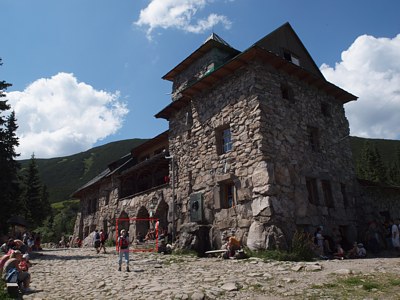
|
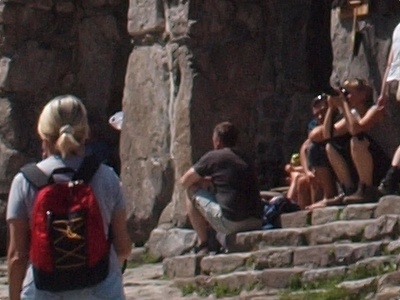
| |
|
[7] 16 mm; AP (±0 EV): 1/400 s at F/11, ISO 200; WB 5300 K [full frame] | ||
|
It is just after noon, with the Sun high, and deep, ugly shadows; I should have waited for at least two hours to take a presentable picture of the scene, but I couldn't afford that. Still the camera is coping just fine. I can see some hints of sharpening artifacts at the hill edge left of the tower, but nothing really bad (note that my sharpening is at N-1; this may be helping). |
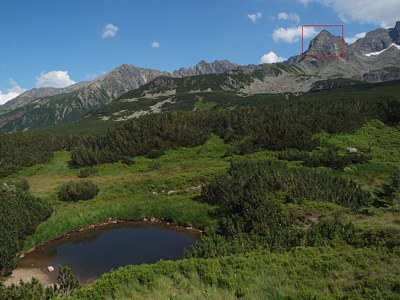
|
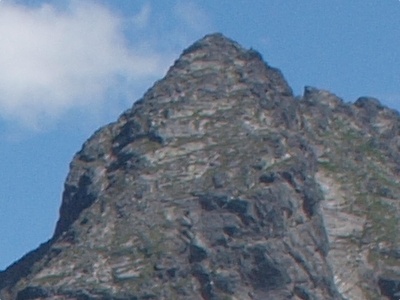
| |
|
[8] 12 mm; AP (-0.7 EV): 1/500 s at F/8.0, ISO 200; WB 5300K [full frame] | ||
|
This is quite easy, with the light almost directly behind me. While the light is more flat, it makes things easier. The mountain edge shows no artifacts worth mentioning which I've seen is some similar images from the same hike, using the same processing parameters; dark magic. Anyway, the result is quite yummy, if not too ambitious. |
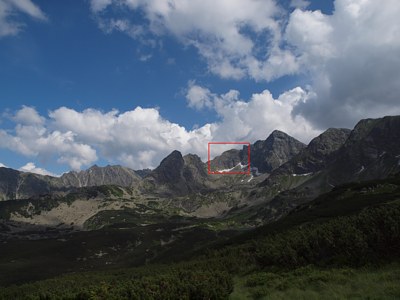
|
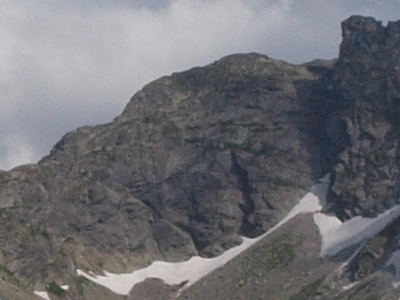
| |
|
[9] 12 mm; AP (±0 EV): 1/640 s at F/9.0, ISO 200; WB 5300K [full frame] | ||
|
This one is tougher, with the cloud pattern increasing the contrast between various parts of the landscape. Still, a workable frame (if begging for some foreground), The prominent peak to the right of the center is Mt. Świnica (The Swine Mountain), the tallest peak entirely within Polish borders (I hiked it last time in 2000). As usual, the contrast (and, to some extent, sharpness) of distant mountains are affected by the atmospheric haze; this is normal. |
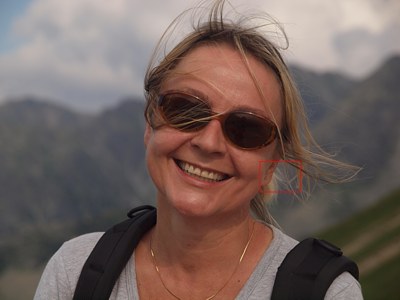
|
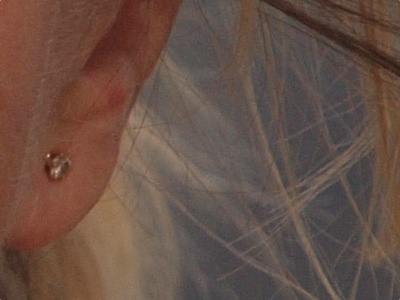
| |
|
[10] 55 mm; AP (-0.3 EV): 1/2500 s at F/4.0, ISO 200; WB 6000K (cloudy) | ||
|
Switching to the "cloudy" WB was not the best idea; the 5300K setting works fine all the way into some really gloomy weather. Still, this is easy to correct in postprocessing; you do not have to use a raw file for that. Otherwise, skin tones are nice. At this focal length the F/4 aperture is already wide enough to make the background quite fuzzy. Day 3: Downtown and along Mt. Gubałówka A rainy day — but just a drizzle, so we decided to take a bus downtown and spend some time there. |
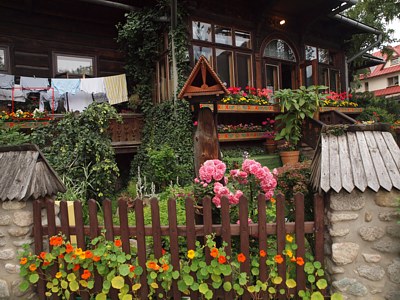
|
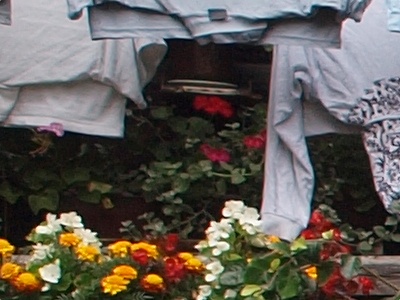
| |
|
[11] 12 mm; AP (±0 EV): 1/100 s at F/4.0, ISO 200; WB 6000K [full frame] | ||
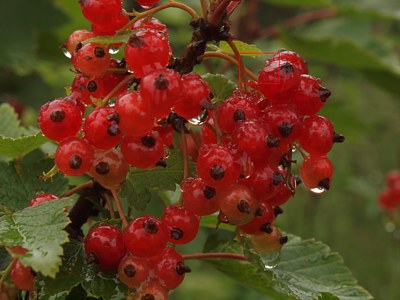
|
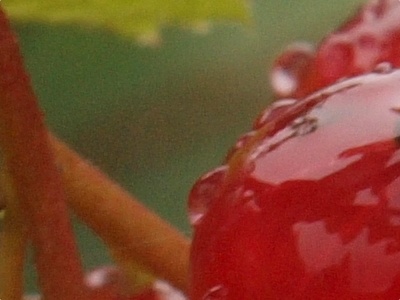
| |
|
[12] 60 mm; AP (-0.7 EV): 1/100 s at F/11, ISO 400; WB 6000K [full frame] | ||
|
These two frames illustrate how the E-620 handles bright colors. Not too bad, except that in Sample [11] I would be better off applying an exposure compensation of -0.3 or -0.7 EV, to avoid overloading of the saturated flower petals. I usually remember about that in close-ups, like [12]. The latter shows, again, the pleasant noise pattern we already have noticed at ISO 400. |
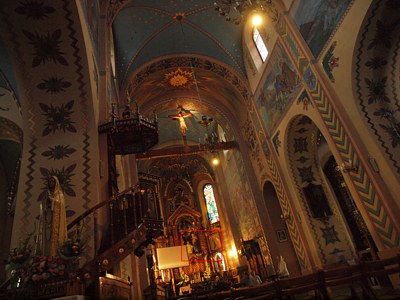
|
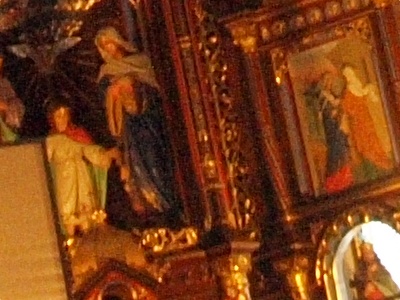
| |
|
[13] 12 mm; AP (+0.3 EV): 1/25 s at F/2.8, ISO 1600; WB 6000 K [full frame] | ||
|
A dark church interior with gloomy weather outside — I had to raise the ISO to 1600 to keep the shutter speed handholdable. The WB of 6000 K is just an accident, but in yellow tungsten light with occasional intrusions of daylight from the windows this does not make much difference; I decided against changing the tint in postprocessing. We can clearly see some noise and some loss of resolution as well; the full frame will give you a better idea. While the high-frequency (fine-sized) noise pattern is tight and nice, we can see ugly larger-scale blotches; check the top-left corner of the full image. A noise-filtering application (like the Neat Image I'm using) will do a decent job in removing the high-frequency component, but the low-frequency blotches will remain; compare my postprocessed image, where the artifacts in top-left are quite annoying. |
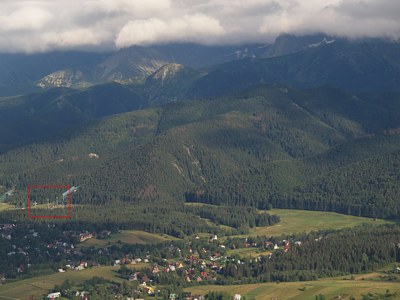
|
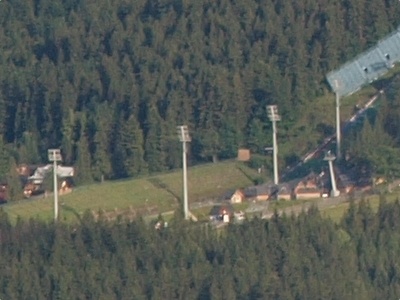
| |
|
[14] 51 mm; AP (-0.3 EV): 1/540 s at F/5.6, ISO 200; WB 6000K [full frame] | ||
|
Here, a closer scrutiny of the full frame shows that some of the brighter house areas are overexposed; perhaps changing the exposure compensation to -0.7 EV would have made sense. This is not really a big deal, as the burned-out areas are very small, but still. Another solution would be to use an incident light meter (one talking directly to the camera would be a great gadget!). The EXIF data shows the Continuous AF mode, which I practically never use, at least not knowingly; I must have pressed the right-arrow button by accident, also turning the control wheel within the grace period. (Three frames later I'm back in Single AF; most probably I've restored the setting, with my blessed habit of frequently checking the Control Panel). This demonstrates the dangers of crowding the controls near the place where your thumb supports camera's weight. A way to avoid such problems is to set the wheel grace period to zero. |
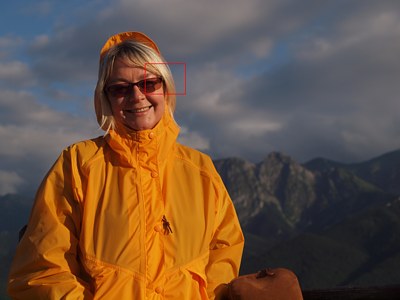
|
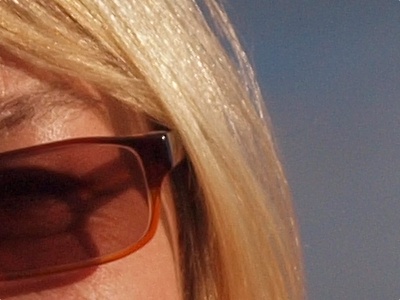
| |
|
[15] 35 mm AP (-0.3 EV): 1/4000 s at F/4.0, ISO 200; WB 6000 K | ||
|
A spot of sunshine, and a most enjoyable outcome. The "cloudy" WB enhances the warm colors (even if "sunny" would be more natural). |
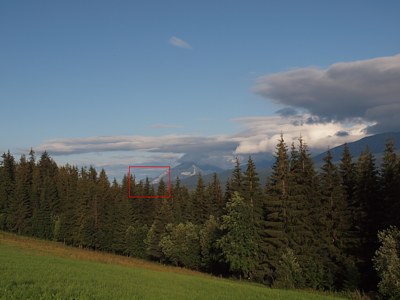
|
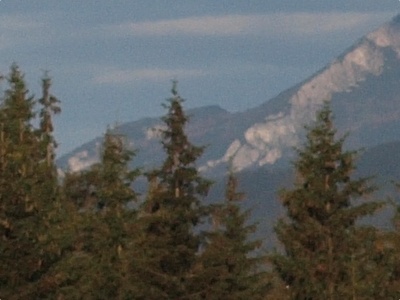
| |
|
[16] 24 mm; AP (-0.3 EV): 1/250 s at F/13; ISO 200; WB 6000 K [full frame] | ||
|
The colors are good, if a bit warm (see the WB!), and the detail holds well in the whole range. Actually, the image should be viewed full-frame to be evaluated (or appreciated). The mountain in the background is already in Slovakia. |
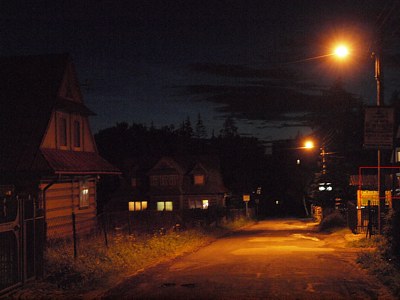
|
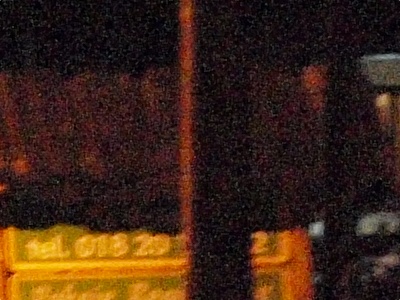
| |
|
[17] 29 mm; AP (-1.3 EV): 1/8 s at F/3.5, ISO 3200; Auto WB [full frame] | ||
|
Well, this is quite noisy at ISO 3200, and at 1/8 s (handheld) I can see some camera shake, but this night village scene is, still, a quite nice picture. The noise, if visible, does not form blotches, and the Neat Image plugin cleans it up quite well, see the postprocessed version, even if I might have overdone it a bit. Day 4: Before going back Just three quick shots here: |
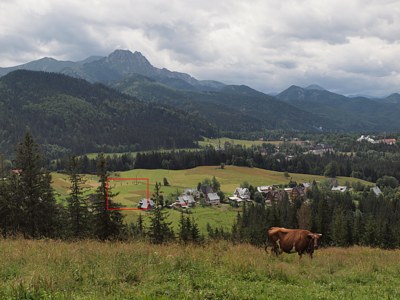
|
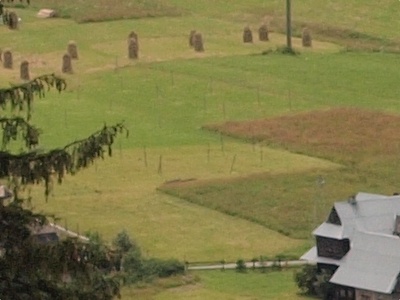
| |
|
[18] 27 mm; AP (±0 EV): 1/640 s at F/8, ISO 200; WB 6000K [full frame] | ||
|
Cloudy weather again; still, quite bright and contrasty. I'm not very happy with the colors; perhaps "sunny" WB would be better? (Still, I wouldn't use Auto WB here; usually too inconsistent under such circumstances.) |
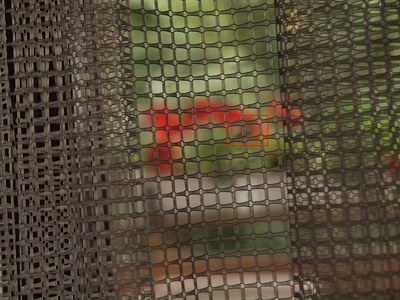
|
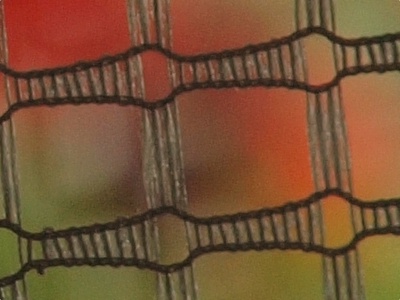
| |
|
[19] 39 mm; AP (±0 EV): 1/125 s at F/3.8, ISO 200; WB 6000K [full frame] | ||
|
Soft bokeh, good tonality. Traces of noise a with nice, clean pattern. |
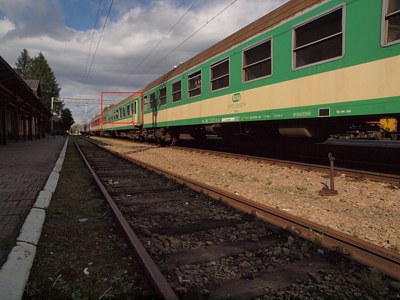
|
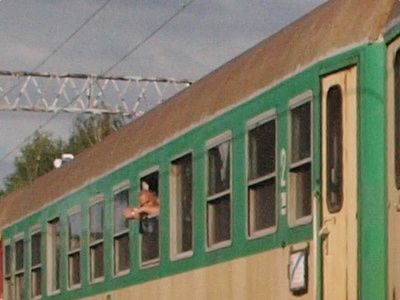
| |
|
[20] 12 mm; AP (-0.7 EV): 1/1250 s at F/9.0, ISO 200; WB 6000K [full frame] | ||
|
Generally, the E-620 requires less negative exposure compensation than, for example, the E-510. Still, here I've used -0.7 EV (combined with higher WB setting) to get the colors strong and warm. You will find a few more pages with E-620 image samples at this site:
|

|
My other articles related to the |
|
Olympus® is a registered trademark of Olympus Corporation.
This page is not sponsored or endorsed by Olympus (or anyone else) and presents solely the views of the author. |
| Home: wrotniak.net | Search this site | Change font size |
| Posted 2009/11/30; touched up 2013/11/02 | Copyright © 2009 by J. Andrzej Wrotniak |